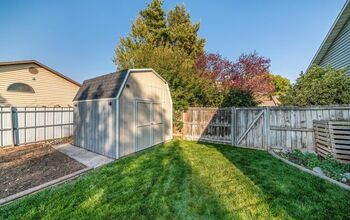How To Cap Off The Water Line To A Refrigerator (Do This!)

Every home has a refrigerator, but not every homeowner needs every function a fridge offers. For example, if you don’t use water or your fridge’s icebox, you may want to cap off the waterline. It may be easier said than done, but how do you cap off a water line to a refrigerator?
Turn the T-valve to stop the water flow, remove the freezer pipe, and clean it. Smooth out the copper pipe, put the cap over the pipe, and twist it into place. You can also use a tap valve to cap off the water line to your fridge.
Alternatively, you can use a piercing water saddle tap valve to drain and plug the waterline. Follow along as we explore how you can cap off your fridge’s water line.
Can You Cap Off the Line To a Refrigerator?
Yes, you can cap off the line to a refrigerator if you’re not using it. It’s a smart idea to cap off the water line to a fridge if you aren’t using the ice maker. Water supply lines can leak and cause damage to the fridge, wiring, and flooring.
Leaking water can work its way under your flooring causing expensive damage. You also face the risk of mold which can spread throughout the whole house. Turning off the supply valve is not enough to prevent the line from leaking water.
It doesn’t help that water supply lines are susceptible to corrosion due to the constant moisture. You can tell that your supply line is leaking if you find a pool of water in front of or behind the fridge. Much like capping off a dishwasher drain, capping off a water line to a fridge can save you a fortune.
How To Cap Off Fridge Water Line
Safety is everything when you cap off a fridge’s water line. Refrigerators are heavy and you are right by wires and a dangerous electrical outlet. Gather a water line cap, which only costs between $2 and $5, and a pair of pliers for this job.
There are two ways that you can cap off a refrigerator water line, and we are going to explore both.
Option 1 to Cap Off a Fridge Water Line
Step 1. Pull Fridge Out
Carefully pull the fridge out and away from the wall. You don’t need to move the fridge entirely, just far out enough for you to work. If you find pooling water behind the fridge, then it will only reaffirm that you need to cap off the waterline.
Use a dry rag or several paper towels to mop up any water behind the fridge. This will prevent mold and make it safer for you to work.
Step 2. Stop Water Flow
Now, you must stop the water flow so that you can work without making a wet mess. Locate the T-valve behind your fridge. It is easy to find because, as the name suggests, it is shaped like a “T” and it is usually made out of brass.
Sometimes, you can find the T-valve under your sink instead of behind the fridge. Carefully turn the T-valve clockwise until you feel it stop. This will turn off the water flow and ensure that you can safely work without making the problem worse.
Step 3. Remove Freezer Pipe
You must remove the freezer pipe to cap off the water supply line to your fridge. Identify the copper pipe at the back of your fridge that feeds into the freezer. Clamp onto the nut on the freezer pipe with a pair of small pliers.
Move the nut in a counterclockwise motion to loosen it and remove it from the pipe. Set the nut to the side, and carefully pull the freezer pipe out of the fridge by hand. Keep both the nut and freezer pipe in case you decide you want to remove the water line cap later on.
Step 4. Install the Cap
Clean off the copper pipe with a rag so that the water line cap fits perfectly. Place the cap over the pipe, twist it, and push it deep into the pipe. Try not to force the cap, but make sure that it goes deep enough that it will prevent water from spilling out.
Now, your fridge is safe from leaks, damage, and flooding. You can always opt to remove the water line cap in the future if you prefer, but there’s no reason to. The water line cap protects your fridge, kitchen, and flooring from damage.
Option 2 to Cap Off a Fridge Water Line
Step 1. Shut Off Water
For this method, you must first shot off the water to your kitchen or wherever the fridge is located. Now, move the fridge out from the wall and have a bucket ready. Place the bucket on the ground by the waterline and detach the water line from the fridge.
Catch as much of the water in the bucket as you can and mop up any excess water that spills.
Step 2. Use Tap Valve
Place a piercing water saddle tap valve at the end of the water line that you just disconnected. They fit well enough that you can usually tighten them with your fingers, but a wrench also works. Twist the tap valve clockwise until it is airtight to avoid spewing water.
Place a bucket underneath the piercing water saddle tap valve because water will rush out. Between 2 and 5 gallons of water may come out of the pipe, so be careful.
Step 3. Cap the Line
Now, twist your piercing water saddle tap valve to cap off the waterline. The water saddle tap valve will release all of the water that is trapped in the line. It can take several minutes for all of the water to fill your bucket, and the trickle eventually slows down.
Twist the valve so that it is completely closed once all of the water rushes out. It will stay closed unless you change your mind and want to remove the tap valve. The whole process takes between 10 and 20 minutes and it is one of the easiest ways to cap off a refrigerator water line.
Do You Need To Cap Off Fridge Water Line?
You don’t need to cap off a fridge water line, but it is a great idea. Only cap off your water line if you are not currently using it. A water line can leak and corrode even when you aren’t using it, and that’s why people cap them off.
Whether you use copper or plastic refrigerator water lines, they are susceptible to leaks. The only kind of water supply line that rarely leaks is a braided stainless steel line, but they are pricey. Capping off a water line is not permanent, so you can always undo it if you decide that you need to use the waterline.
Related Questions
Why is there water behind my fridge?
Water pools behind your fridge if your water supply line leaks or your defrost tube is defective. Defrost tubes clog up due to frost, ice, and debris, and water leaks out. You can replace the defrost tube or you can cap off the water line to stop the water from leaking.
Is leaking refrigerator coolant dangerous?
Yes, leaking refrigerator coolant is dangerous because it contains the chemical freon. Freon is dangerous because it is hard to detec t visually or by odor, but prolonged exposure is dangerous. Refrigerator coolant can stop your lungs from receiving proper oxygen if you breathe it in for long enough.
Can a refrigerator be used without a water line?
Yes, you can use a refrigerator without a water line but it will limit the fridge’s use. You won’t be able to use the ice maker and can’t run water through the fridge that way, but it’s also an easier setup. Later on, you can decide to hook up water lines if you decide that you want water and ice.
How much does it cost to install a water line for a refrigerator?
You can expect to pay an average of $100 to have a professional install a water line for your fridge. It can cost as little as $70 or as much as $130, or more if there are complications. You can also install a water line for your refrigerator on your own and only spend $30-$60 on supplies and tools.
Why is my icebox leaking water?
A fridge’s icebox can leak water if the defrost drain becomes blocked. Drain hoses get clogged by debris, ice, and scraps of food causing the box to leak. Iceboxes also leak water if the freezing element quits working and the ice melts causing the water to overflow.
Summing It Up
Turn off your fridge’s water supply by turning the T-valve. Next, you can loosen and carefully remove the freezer pipe. Insert a cap into the water line and push it deep enough that it fits tightly.
Otherwise, you can insert a piercing water saddle tap valve into the line to drain and cap it off. You’ll thank yourself for capping off your water line when you don’t have any leaks.
More Related Guides

Nick Durante is a professional writer with a primary focus on home improvement. When he is not writing about home improvement or taking on projects around the house, he likes to read and create art. He is always looking towards the newest trends in home improvement.
More by Nick Durante














![10 Best Electric Pressure Washers – [2022 Reviews & Guide]](https://cdn-fastly.upgradedhome.com/media/2023/07/31/9070600/10-best-electric-pressure-washers-2022-reviews-guide.jpg?size=350x220)















